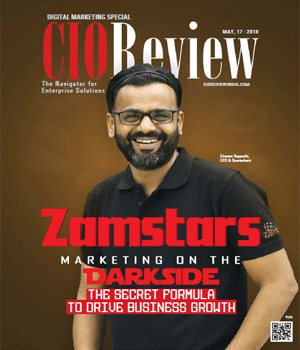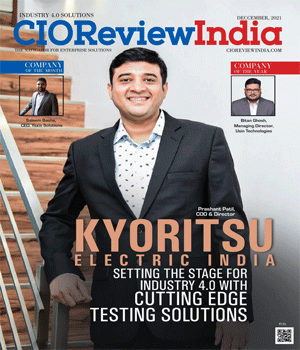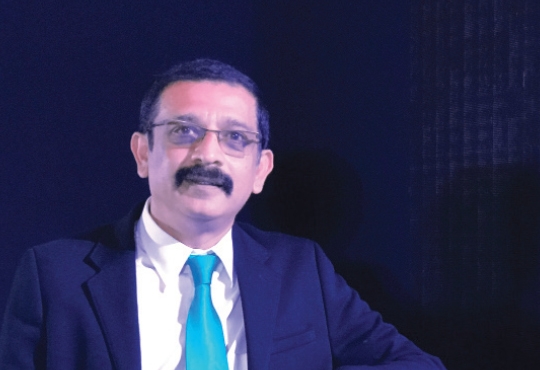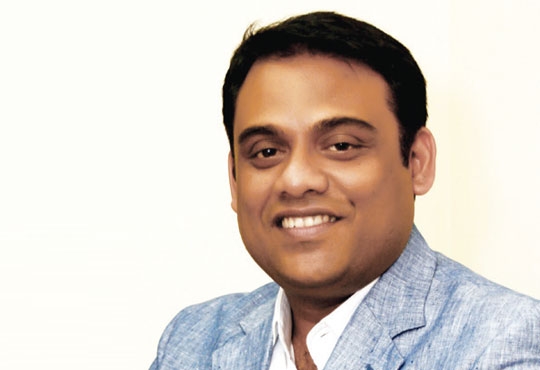
Navigating Constant Change: A CIO's Rules of the Road
Jason Lichtenthal, SVP, CIO, The PURE Group of Insurance Companies | Wednesday, 02 August 2017, 11:55 IST
 A company's technology platform and website are a living, breathing expression of who the organization is and how it engages with customers and other stakeholders. As CIOs, we know that technology is not static, but is rather a constantly evolving entity that both help shape—and is shaped by—the company's continued evolution.
A company's technology platform and website are a living, breathing expression of who the organization is and how it engages with customers and other stakeholders. As CIOs, we know that technology is not static, but is rather a constantly evolving entity that both help shape—and is shaped by—the company's continued evolution.
At Privilege Underwriters Reciprocal Exchange (PURE), a policy holder-owned insurer for high net worth individuals (we call our customers “members”); we have experienced this transformation first hand. Since the company's founding, our technology platform has evolved from a simple broker tool into a complex system handling broker management and a sophisticated member portal. As CIO, I have overseen this evolution, picking up valuable insights about this member-driven process along the way, which is handy for IT teams and CIOs in any industry.
• Practice emotionally intelligent, transparent development. Member (or customer) experience means different things to different industries, but we aim to make the experience of doing business with us as effortless as possible. Is this transaction painful? Does that process require a lot of effort on the part of the customer? These are situations we solve by making appropriate technological advancements that yield easy options and a transparent experience. We continually make changes to all of our systems and corresponding processes to make sure our members fully understand everything that is happening with their policies and do so with less insurance mumbo-jumbo than everyone else. This also correlates to how we train our staff in explaining insurance terminology to our members.
• Your tech and business leaders must speak the same language. In today's business world, the CIO is as much business strategist as IT expert, and the rest of the c-suite must also be plugged into tech practicalities. Time-consuming head scratching is alleviated when both sides have at least some understanding of one another's worlds.
• Draw information and inspiration from every possible source. We are constantly looking at what other industries are doing, reading a lot, observing customer interactions, considering data and pulling all of that together to build things that are applicable to our business.
For example, PURE, like the rest of the insurance industry, has long offered online bill pay with easy to read bills. But in response to customer demand for more transparency on the activities within their entire insurance ecosystem, we decided to build a claim tracker tool that shows where a claim is in process, everyone involved, notes and documents.
• Be wary of useful tech versus “flash”. It can be tempting to deploy the latest gadgets and gizmos in an attempt to draw attention and create buzz. But in the long run, efficiency is more important. To make the right choices, speak with people in other industries about what they have done, are doing or are considering: What has worked? What hasn't, and why? By thoughtfully considering all options, you will be well positioned to implement tools that are in the best service of customer needs and overall business goals.
• Distinguish between vendors and true partners. A vendor just tries to get the task done, while a partner understands your business, looks out for your best interest and can bring ideas to the table that help shape a vision. Both have value, but as a company grows, the need for the latter increases.
Insurance is a people business, so in our case, we are always calling upon personal relationships. Our culture is very different from that of the typical insurance carrier, so just like with serious relationships in personal life, we seek out partners whose organizational culture matches our own.
• Deploy a multi-prong approach to data security. Companies face a range of threats on the data security front, and so have to be fully informed and prepared by considering the top threats that come out every year, employing a range of cloud technologies and engaging a variety of partners. PURE takes this a step further by challenging each vendor in a variety of ways, deploying their respective areas of expertise.
The biggest threat, however, is always the human element. One errant click can put data at risk, and so PURE spends a great deal of time educating employees about phishing—what it is, how to spot it and how to react? This is especially true of personally identifiable information, which we take very seriously. We will only store sensitive data if we absolutely have to and rely on some of our strongest partners in the industry to keep track of sensitive information. This way, we ensure that our membership is safe and secure at all times.
CIO Viewpoint
Industry 4.0: The Disruptive Force
By In conversation with Murali Raj G R, CIO, HIL
Navigating Constant Change: A CIO's Rules of...
By Jason Lichtenthal, SVP, CIO, The PURE Group of Insurance Companies
How to Raise your Digital Quotient?
By Rajan Venkataraman, Chief Technology Officer, NIIT
CXO Insights
5G Will Bring A Data Tsunami: Can Your Data...
By Nikhil Korgaonkar, Regional Director, Arcserve India & SAARC
Machine Learning Trends In 2021
By Kavitha Siddada, Head - Design Engineering, Shell
The Rise Of Developer Led Innovation &...



.jpg)





